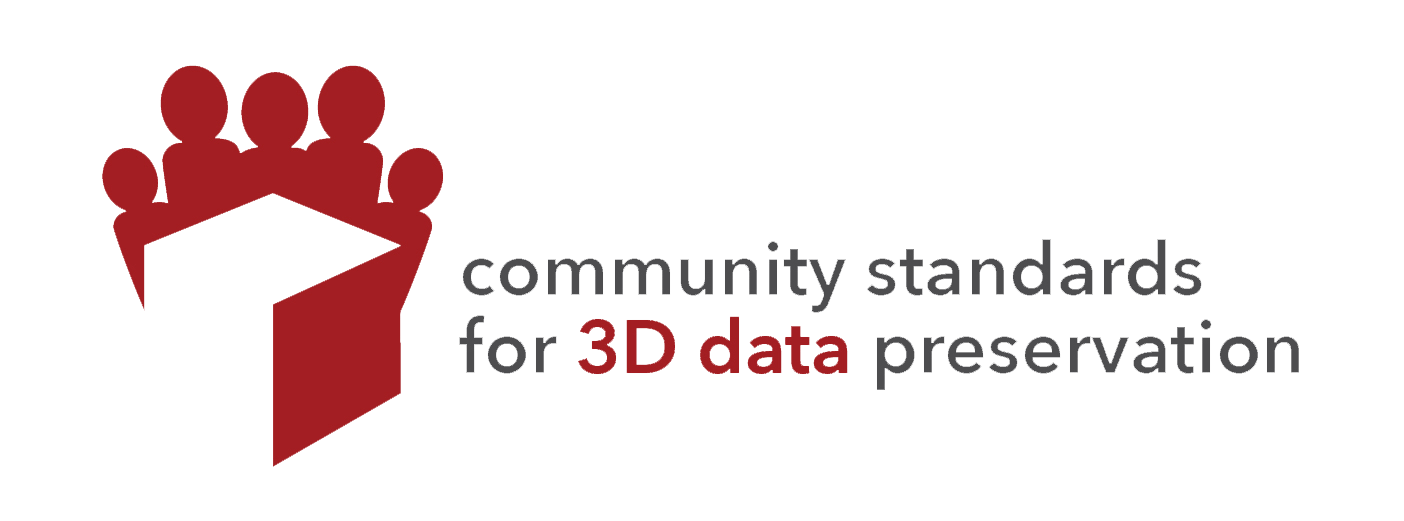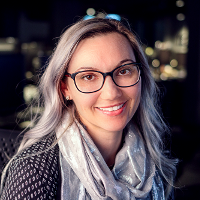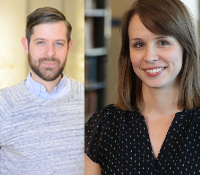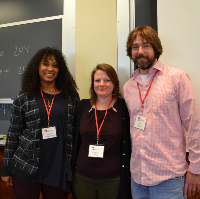Bit List Blog
Lotus Bloats: Preserving Legacy Email for Good
Evanthia Samaras is the VERS Senior Officer at Public Record Office Victoria.
Over the past few years, Public Record Office Victoria (PROV) has been working to develop and test solutions to appropriately manage and preserve Lotus Notes email accumulations.
This work has been a part of our wider Victorian Electronic Records Strategy (VERS), which is about ensuring the creation, capture and preservation of authentic, complete and meaningful digital records by the Victorian public sector.
This blog will share some findings from our Stage 2, email appraisal, disposal and preservation project.
Hyperreal Intangible Cultural Heritage: Digital Preservation of Dance
Anna Oates is Scholarly Communication and Discovery Services Librarian at Federal Reserve Bank of St. Louis in the USA, and former graduate student of the Illinois School of Information Sciences where these studies originated.
A Roundabout Introduction to Digital Preservation of Dance: Navigating the PDF/A Standard
Four months after its initial submission, my master's thesis [1] appeared on the University of Illinois at Urbana-Champaign institutional repository. Since this successful ingest, I have been asked to write a brief summary so that those who might find value in the research would not have to traverse through the pages of a laborious discussion on PDF, specifically as manifested in PDF/A (Portable Document Format — Archival) as a recommended format for the long-term preservation of student theses and dissertations. True to the Galleries, Libraries, Archives, and Museums (GLAM) quiddity, my research explored the meta relationship of my student work — a thesis to be deposited in an institutional repository about theses that had been deposited in an institutional repository.
Preserving Research Data: Finding Our Legs at Scholars Portal
Grant Hurley is Digital Preservation Librarian, Scholars Portal and Meghan Goodchild is Research Data Management Systems Librarian, Scholars Portal/Queen’s University Library. They are based in Ontario, Canada
As a service provider, Scholars Portal is building a suite of services and infrastructure to support the research data management and preservation in Canada. But a key gap is the ability of our member institutions to make use of these services when there is a lack of policies, procedures, strategies and resources at the local level. This post outlines our work to support research data preservation workflows through an integration project between Dataverse and Archivematica. And it offers some observations on the challenges facing the uptake of these tools that means the preservation of research data continues to be at risk.
Community Standards for 3D Data Preservation
Jennifer Moore (Washington University in St. Louis), Adam Rountrey (University of Michigan Museum of Paleontology) and Hannah Scates Kettler (Iowa State University) are Primary Investigators for CS3DP (Community Standards for 3D Data Preservation)

Rapid adoption of new technologies can sometimes result in the creation of vast quantities of poorly documented, at-risk data. While the immediate advantages of a breakthrough technology such as low-cost 3D scanning or high-speed photogrammetry (creating 3D models from a series of photographs) can quickly lead to widespread use, preservation of the resulting data is often overlooked and only considered when the stacks of external drives in the closet are starting to fall over. Indeed, several years ago, we found ourselves wondering if others were eyeing their rapidly accumulating 3D data with similar anxiety, and in 2017, we decided to conduct a survey targeted at those creating, using, and curating 3D data in various fields to find out. Most responses came from individuals at universities, libraries, and museums in the United States, and the majority of respondents were, as we suspected, not using documented best practices or standards for handling 3D data. Those who were had largely developed their own standards in house. Of those not using standards/best practices, 69% said that they did not use them because they were unaware of such standards. However, the vast majority (85%) of all respondents said they would like to develop standards and best practices collaboratively as a community. Survey comments, such as, “I am very excited to see that you are doing this survey and potentially pulling this community together,” from an expert at a leading museum captured the desire for progress in the area as well as the sense that successful standards development would require participation from diverse stakeholders. These results led to the development of the Community Standards for 3D Data Preservation (CS3DP) program.
Email at Risk: Challenges and Opportunities in Preserving Email
Sally DeBauche is Digital Archivist at Stanford University Libraries in the USA
Email offers singular insight into and evidence of a person or organization’s self-expression, as well as records of collaboration, professional, social, and familial networks, and all manner of transactions. Email is an essential component of the archival record -- the modern equivalent of the type or hand-written correspondence of past centuries. However, email is also a complex format that poses many technical challenges to archivists working to preserve and provide access to it. In their 2018 report, the Task Force on Technical Approaches for Email Archives described email as, “…not one thing, but a complicated interaction of technical subsystems for composition, transport, viewing, and storage.”
Compounding this complexity, email is not a constant or consistent format. As email technology has evolved and email clients have fallen in and out of use, archivists working with historical email collections will encounter a wide variety of email file types. Thus, the most essential tasks of capturing, processing, preserving, and providing access to email pose a host of technical obstacles for cultural heritage institutions.
Exploring 3D File Formats on the Sustainability of Digital Formats
Kate Murray is Digital Projects Coordinator, Leader of Sustainability of Digital Formats and FADGI Audiovisual Working Group at the Library of Congress in the USA
3D content, both digitized and born-digital, continues to be an area of focus across the Library of Congress. Last year on the #WDPD blog, we focused on a recap of the Born to Be 3D: Digital Stewardship of Intrinsic 3D Data (#B2B3D) small group forum to discuss stewardship of born digital 3D data. This year on the Sustainability of Digital Formats website, we’re diving a bit more in depth to explore file formats for 3D for scanning, printing and modeling.
Digital Preservation and Games
Nance McGovern is Director of Digital Preservation at MIT Libraries, Massachusetts Institute of Technology (MIT) in the USA
This year for World Digital Preservation Day I decided to focus on the place of games in digital preservation. The digital preservation community benefits from having digital preservation games to help build understanding and awareness about good practice for digital preservation games also represent an example of complex digital content that may need to be preferred. I have been lightly monitoring a class on game design this semester as a way to continue thinking about games in the various ways digital preservation intersects with them.
The crucial work of digitizing and publicizing Museum's collections as a way of preservation and spreading knowledge: the case of Museu Nacional/UFRJ
Cristiana Serejo is Deputy Director at Museu Nacional/ Universidade Federal do Rio de Janeiro
Due to the great fire, which occurred in September 2018, the collection of the permanent exhibition, as well as part of the scientific collections, were lost. Despite the invaluable loss of historical objects and specimens, the institution has been invested in projects of preservation and digital recovery of its collections as a strategic action to safeguard and preserve collection data for future generations.
Founded in 1818, the National Museum (MNRJ) is the oldest scientific institution in Latin America. For more than two centuries the museum has been and is still a fundamental agent for the cultural and scientific development of the country. Nowadays, in addition to promoting scientific education and dissemination, the institution develops world-renowned research lines in the areas of anthropology, botany, zoology, geology and paleontology.
Extracting Information from 5.25” Floppy Disks – Historic Environment Scotland
Frederick Alexander is Digital Archivist at Historic Environment Scotland
The digital archive at Historic Environment Scotland comprises of 42 terabytes of digital materials. This archive, alongside its physical counterpart, contains information relating to the historic environment of Scotland. Scotland’s historic environment is the physical evidence of past human activity, from a prehistoric fort, to a Victorian garden, to a drawing of a cityscape. In this blog post I want to give an example of how we extracted and preserve at-risk digital materials, and in doing so developed our digital preservation skills.
In 2018 we received a deposit of operational records from Reiach and Hall Architects. Reiach and Hall was established in 1965 and has been responsible for the redevelopment of Dundee Council Civic Offices (Dundee), the University of St Andrews Medical Sciences Building (St Andrews), and the Scottish National Blood Transfusion (Edinburgh).This collection comprised of drawings, reports, and project files. There was an additional digital deposit, including seventeen 5.25 floppy disks.
Planning ahead for DVD-Video migration research
Kieran O’Leary is Data and Digital Systems Manager at the Irish Film Institute in Dublin
In a moving image archive, there are many objects that can be classified as ‘at-risk’, so it’s hard to pick just one. The one that’s on my mind the most at the moment is optical media, mostly because of an upcoming project involving lots of optical media, specifically DVD-Video. This project is similar to the Loopline Project that resulted in us winning The National Archives Award for Safeguarding the Digital Legacy from the Digital Preservation Coalition. I would like to talk about how optical media became a major focus of this project, a little bit about format-bias, and outlining some of the research that we will have to do.
This project is supported by the wonderful Broadcasting Authority of Ireland Archiving Scheme, and one of the great things about it is that it allows us to focus on understanding formats and developing migration workflows.



















































































































































